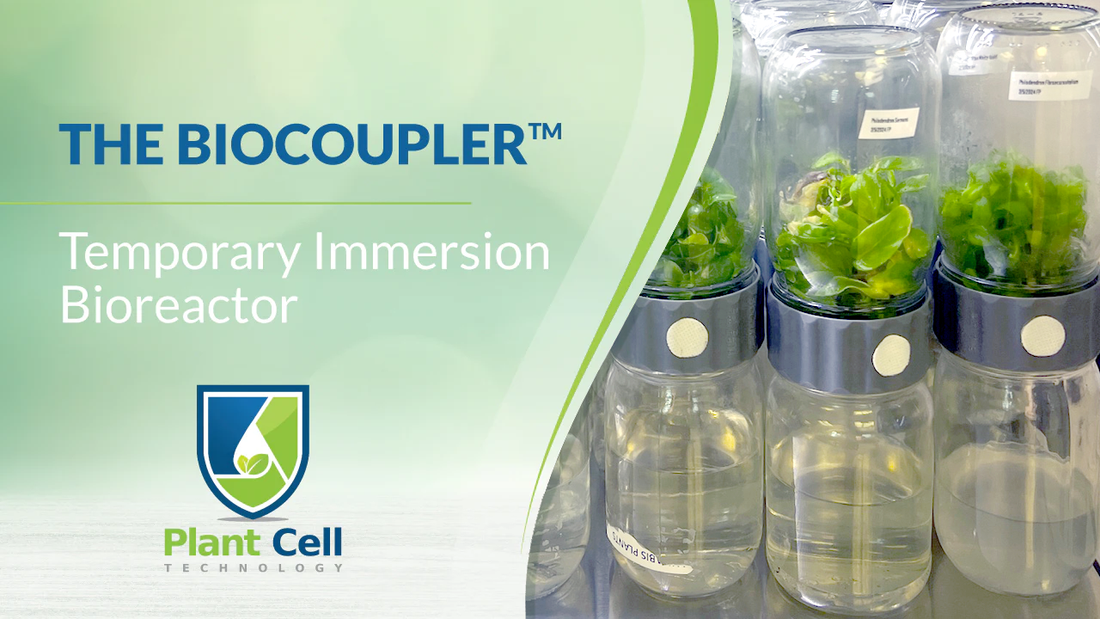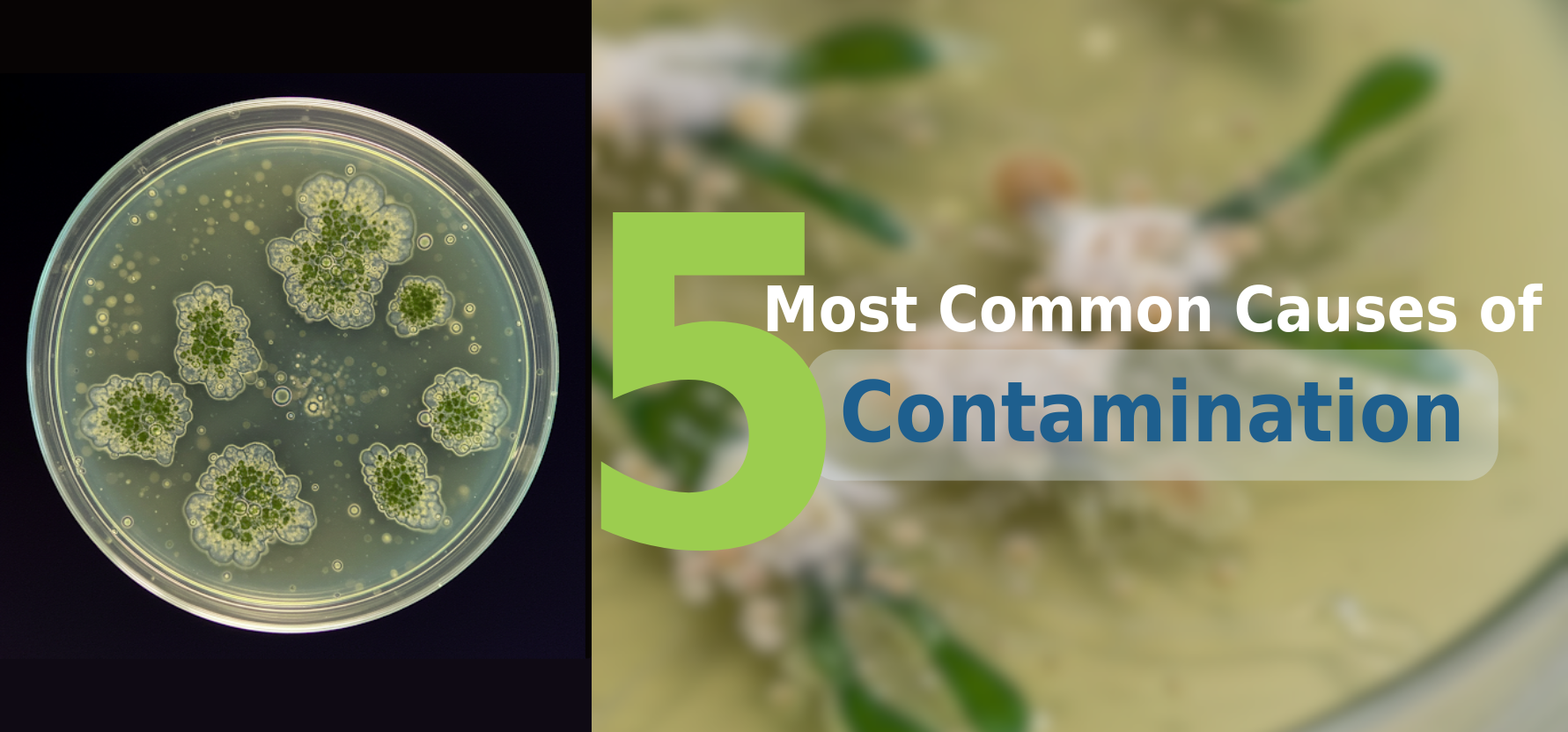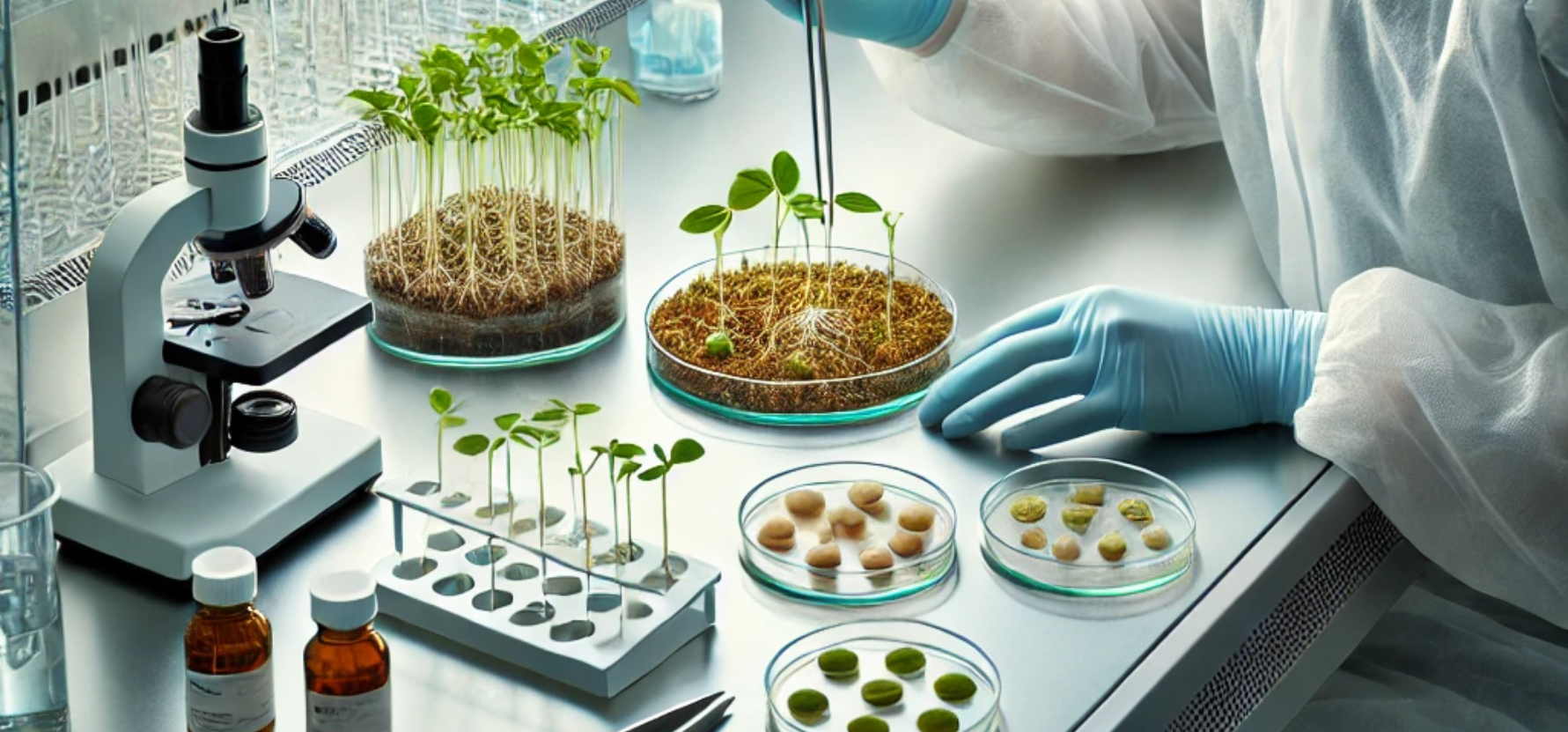
Simplifying Temporary Immersion Systems for Plant Propagation
As a content and community manager, I leverage my expertise in plant biotechnology, passion for tissue culture, and writing skills to create compelling articles, simplifying intricate scientific concepts, and address your inquiries. As a dedicated science communicator, I strive to spark curiosity and foster a love for science in my audience.


Introduction
Designing your own Temporary Immersion Bioreactor (TIB) is a complex and messy process. It can cost you more money in buying separate parts, leg work in arranging all the separate parts from different shops, and time-intensive labor in setting up and assembling the machine and maintaining it at a high-performance level. They are complicated to use and maintain and take up quite a bit of shelf space.

To help you with all these challenges Plant Cell Technologies has brought the simplest, easy-to-use, efficient, reliable, cost-effective, and uncomplicated temporary immersion bioreactor—BioCoupler™—Temporary Immersion Bioreactor.solution. It’s a unique (patent pending) device that simply couples two glass vessel mason jars together, works without electricity, and doesn’t require any complicated assemblage of various parts, tubings, nor pum=ps.
But first, how did we get here? What’s unique about this specific design? Why is this product the preferred alternative to traditional temporary immersion bioreactors? How does it simplify temporary immersion bioreactor systems? What makes the new, patent-pending BioCoupler™ Temporary Immersion Bioreactor the best choice for hobbyists, research, and commercial labs all over the world?
A Bit of Background
First, let’s start with an overview of in-vitro plant propagation. Despite providing several advantages, propagation of plants on a commercial scale using tissue culture technique is always criticized for its costly procedures, whether its operation, maintenance, labor cost, or area cost.
Extensive research is required to bring down the operation or overhead cost by introducing equipment or systems that are cheap but effective.
One way to achieve this is by the use of a large volume and high-yield culture system with liquid media to facilitate handling. The use of bioreactors has been an efficient way to ease the scaling-up and low production costs.
Bioreactors are a self-contained, sterile environment whose basic function is to provide optimum growth conditions by regulating various chemical and/or physical factors. Currently, several types of bioreactors are available including air lift-bioreactor, stirred tank bioreactor, rotating drum bioreactor, and column bioreactor.
In these bioreactors, plants are present in completely submerged conditions, which limits the proper gas exchange between plants. Thus, it causes vitrification or hyperhydricity of plant tissues. Its symptoms include chlorophyll deficiency, cell hyperhydricity, hypolignification, reduced deposition of epicuticular waxes, and changes in enzymatic activity and protein synthesis.
The best alternative to the problem is the use of a membrane raft system, nutrient mist bioreactor, or temporary immersion bioreactor (TIB).
In this article, you will learn about temporary immersion bioreactors—what they are, how they function, their advantages over other bioreactor systems, and how to design your own TIB. This article also introduces you to the most unique and innovative temporary immersion bioreactor until now—BiocouplerTM—and why should you choose the device over all other available options, including a DIY TIB bioreactor.
What is a Temporary Immersion Bioreactor (TIB)?
A TIB is simply defined as the immersion of the entire culture into culture media for a short period of time. This bioreactor consists of two systems that include two physically separated vessels or a single system containing partitions between its upper and lower part.
A TIB involves two phases of wetting and drying. First, the air is pumped into the vessel containing culture media, which pushes the media into the other vessel containing cultured explants. After a short period of time, another pump supplies air into the explant-containing media, which pushes the media back into the media-containing vessel and allows the cultures to dry up. And, this cycle is repeated during the whole process.
The most advanced temporary immersion bioreactors are RITA and BioMINT bioreactors. The BioMINT bioreactor is a medium-sized modular bioreactor in which the movement of the liquid medium from one vessel to the other is passively driven by gravity. It doesn’t require a connection to pumps or air compressors. It’s used for all stages of the micropropagation process, from induction to in vitro weaning, of many species.
Advantages of A Temporary Immersion Bioreactor (TIB)
- It protects plants from any physiological disorders, like vitrification. The immersion of explants for 5-10 minutes every 3-6 hours (depending on the plant species) avoids hyperhydricity and maintains plants in healthy conditions.
- It’s easier to control the frequency of culture immersion using a temporary immersion bioreactor, which provides better control over maintaining the growth and development of plants.
- A thin film of liquid forms after the media supply causes the improvement of the entire culture in the system by allowing proper gas exchange.
- The cultures are protected from contamination due to the presence of specialized air vents.
- The plants are protected from any mechanical stress due to the lack of agitation in the system, which is higher in the other bioreactors.
Designing a Temporary Immersion Bioreactor
The principal component of a temporary immersion bioreactor is the same as other bioreactors, like those in airlift or bubble column-type bioreactors. The difference, however, is that it requires a fixed or floating raft support system inside the culture vessel to support the explants. It has two tanks, a culture vessel, and a media storage tank that is usually located at the bottom of the culture vessel or in a separate bottle in case of a twin bottle system.
The entire process is controlled by a solenoid valve and the process or media is controlled by two air pumps.

Designing Your Own Temporary Immersion Bioreactor
Requirements
Cambro RFS6PP190 Camwear 6-Quart Round Food Storage Container with Lid, 2 hose barb connectors, Silicone Hose Washer Gasket, metal washer, silicon tubes, air pump, digital power supplier, solenoid (¼ inch), Multifunctional Infinite Cycle Programmable Plug-in Digital Timer Switch, cable with plug, electrical tape, soldering iron, and adaptors.
Steps to Design DIY Temporary Immersion Bioreactor
- Take two containers and make two holes in each container, on one side, at a distance of around 2-3 cm.
- Fit hose barb connectors in the holes of the container.
- Then, take two tubes of the same length (the length of the tube should be between 4-5 cm) and fit them into one hole of each container.
- Attach the filter in the tubes.

Figure: Image of two ends of the tube that will be attached to one hole of each container and filter attached to its center.
- Attach the tube of 8-10 cm in the other hole of one container (this tube will simply connect both the containers).

Figure: Image of the setting of tubes between two containers.
- Attach one tube, touching the surface of the container, to the barb connector on the inside of each container. This tube will be attached to the barb connector whose other side has a tube with a filter attached to it.
- Connect both the containers as shown in the above image.
- Connect the pump with the solenoid using Y-shaped connectors.
- The tube (with the filter) of both the containers will be connected to two separate pumps (that will be connected to the solenoid).
- The pumps will have plugs at their wire end that will be attached to the time

Figure: The whole setup of DIY temporary immersion bioreactor. Here, vessels of two different sizes are shown in the image, but you can also go with containers of identical sizes.
- Attach the plug-in digital timer to an electrical source.
- Your DIY temporary immersion Bioreactor is ready to operate!
While you can follow this protocol, and create your own DIY Temporary Immersion Bioreactor, the BioCouplerTM is an alternative, more optimized solution to consider. Where innovation and efficiency coalesce, this device is now available to you. Consider the pros of this ingenuitive invention below.
DIY TEMPORARY IMMERSION BIOREACTOR VS. THE BIOCOUPLER ™ TEMPORARY IMMERSION BIOREACTOR
- The BioCoupler™ is a simple device that only requires two standard mason jars vessels that are joined using the coupler. Whereas, a DIY TIB requires many complicated parts, such as pumps, mechanics, tubing, filters, timers, solenoid valves, flow balancing valves, etc.
- The BioCoupler™ has simple parts that are easily replaceable and easily available in shops at a much affordable cost, whereas a DIY TIB has complicated parts that need more leg work in their assemblage and maintenance.
- The BioCoupler™ doesn’t require electricity for its operations, whereas a DIY TIB runs on electricity.
- The BioCoupler™ costs little compared to a DIY TIB and operates at its full capacity without compromising the quality of the cultured plants.
- The BioCoupler™requires less shelf space compared to a DIY TIB.
- BioCoupler™ is easy to sterilize and handle, whereas a DIY TIB is confusing and complicated when it comes to sterilization and discerning which parts to sterilize and which do not.
- A DIY Temporary Immersion Bioreactor requires labor-intensive assembling and disassembling whereas the BioCoupler™ does not.
WHAT'S THE APPLICATION OF THE BIOCOUPLER™?
The BioCoupler™ can be used with any standard mason jars, ranging in volumes from 8 liquid ounces (237 ml) to 32 liquid ounces (947ml). For it’s first limited sales run, the BioCoupler ™ can be purchased from PCT. It's offering a complete set with 16 oz mason jars for a limited period of time. It has been successfully tested for a wide range of plants, including orchids, cannabis, aquatics, succulents, ferns, and carnivorous plants. Hundreds of the devices can be used to produce thousands or hundreds of thousands of plants on a yearly basis.

Who can use the Biocoupler™?
The BioCoupler™ system is perfectly suited to small hobby labs as well as large commercial producers. They are easy to use for lab experiments or any research. It doesn’t require expensive light rooms and is usable outside in shade rooms. For university students interested in making a career in tissue culture, it’s a solution that’s easy to use, easy to understand, and easy to work with.
You can purchase your own BioCoupler™ Temporary Immersion Bioreactor from our store now! Only a limited amount of BioCoupler™ devices are available at this time.

So, hurry up, and get your BioCoupler™ today with high-quality 16oz vessels. And, do share your experience of working with this unique and innovative device at our email info@plantcelltechnology.com.
Happy Culturing!!

Source: Giphy
References
- Afreen, F. (n.d.). Temporary Immersion Bioreactor. Focus on Biotechnology, 187–201. doi:10.1007/978-1-4020-3694-1_11
- Robert, M. L., Herrera-Herrera, J. L., Herrera-Herrera, G., Herrera-Alamillo, M. Á., & Fuentes-Carrillo, P. (n.d.). A New Temporary Immersion Bioreactor System for Micropropagation. Plant Cell Culture Protocols, 121–130. doi:10.1385/1-59259-959-1:121.
- https://www.plantcelltechnology.com/blog/temporary-immersion-bioreactors/
Blog Categories
View by Level
Popular Blogs

The 5 Most Common Causes of Contamination in Tissue Culture Labs
Introduction Scaling up your tissue culture production is impossible if you’re constantly battling contamination. Contamination is one of the biggest...
Read More
What No One Tells You About Subculturing (Until It’s Too Late)
Introduction Subculturing is a crucial process in tissue culture. Why? Because it's responsible for multiplying a single small piece of...
Read MoreSubscribe to Our Newsletter







Join the conversation
Your email address will not be published. Required fields are marked